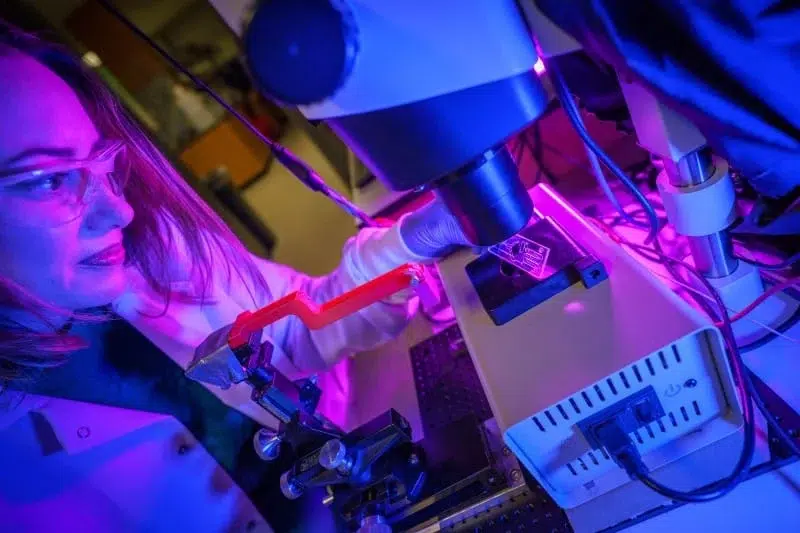Digital DNA Melting Analysis (d-HMA) for infection
Transforming Diagnostics for Infections: Examining the Possibilities of Digital DNA Melting Analysis
In the medical world, the fight against infectious illnesses is never-ending. An early and correct diagnosis is essential to patient care because it facilitates prompt intervention and better treatment results. Although vital, traditional techniques such as blood cultures have drawbacks in terms of speed and false positive rates. This is where the unique and promising approach of digital DNA melting analysis (d-HMA) for pathogen detection comes into play.
Table of Contents

The Speed Advantage: Improved Results with Quicker Diagnosis
Digital DNA Melting Analysis (d-HMA) for infection
The speed of d-HMA is among its most enticing features. Results from d-HMA can be obtained in less than six hours, in contrast to blood cultures, which can take anywhere from fifteen hours to several days. There are numerous advantages to this large turnaround time decrease, including:
- Early treatment initiation: Timely diagnosis enables medical practitioners to begin suitable treatment regimens sooner, which may increase antibiotic efficacy and stop the spread of infections.
- Decreased discomfort and anxiety in the patient: Patients may feel nervous while waiting for the results of their culture. With speedier turnaround times, d-HMA can allay this fear, offer confidence more quickly, or start the required treatment earlier.
- Improved hospital resource allocation: Healthcare workers can more effectively allocate resources, make better use of isolation rooms, and give patients with proven illnesses priority care when they are aware of the pathogen kind in a timely manner.
Beyond Velocity: Boosted Credibility and Diminished False Positives
Digital DNA Melting Analysis (d-HMA) for infection
Although speed is a desirable attribute, d-HMA has an added benefit in terms of dependability. Next Generation Sequencing (NGS) and other recently developed DNA-based detection techniques are more likely to produce false positive results than d-HMA. When a test falsely detects a pathogen that isn’t genuinely present, this is known as a false positive. This may result in the overuse of antibiotics, so fostering antibiotic resistance, and may also unnecessarily worry patients.
The targeted nature of d-HMA reduces the potential for false positives. The melting patterns of particular DNA sequences that are exclusive to particular infections are analyzed by d-HMA. Results from this focused analysis are more trustworthy since there is less possibility of misinterpreting unrelated genetic data.
Revealing the Science of d-HMA: A More Detailed Examination of the Procedure
Digital DNA Melting Analysis (d-HMA) for infection
How then does d-HMA function? There are multiple crucial steps in the process:
- Sample preparation: The first step is to extract DNA from the patient’s blood sample.
- Specific DNA sequences amplified: The particular DNA sequences of interest linked to the targeted pathogens are amplified using a method known as polymerase chain reaction (PCR), producing numerous copies for simpler identification.
- Melting curve analysis: Next, a progressive temperature rise is applied to the amplified DNA. Each sequence-specific temperature is reached at which the double-stranded DNA starts to “melt,” or split into single strands, as the temperature rises.
- Detection and analysis: A unique dye is used to track and visualize this melting process. d-HMA examines the individual melting curves and determines if a given pathogen is present or absent by comparing it to a reference database of known pathogen sequences.
The Path Ahead: Examining d-HMA’s Future
Digital DNA Melting Analysis (d-HMA) for infection
Even while d-HMA has a lot of potential, it’s vital to recognize that this technology is still evolving. For the purpose of verifying its long-term dependability and practical effectiveness, more clinical trials and wide use across various healthcare environments are needed. Furthermore, studies are being conducted to increase the range of pathogens that may be detected with d-HMA, thereby expanding the potential uses of this technique in a variety of infectious disease settings.
Digital DNA Melting Analysis (d-HMA) for infection
Furthermore, optimizing the effectiveness of d-HMA will depend on making sure it is affordable and accessible in a variety of healthcare settings. For this potentially life-saving technology to reach a variety of healthcare facilities and communities, it must be easily accessible and reasonably priced.
Digital DNA Melting Analysis (d-HMA) for infection
To sum up, d-HMA has shown itself to be a promising development in the field of pathogen identification. Its targeted approach, speed, and dependability provide major benefits over conventional procedures and have the potential to completely change how infectious disease diagnosis and treatment are done. d-HMA has the potential to grow into a useful weapon in the ongoing battle against infections as research and development continue, improving patient outcomes and creating a more efficient healthcare system.


